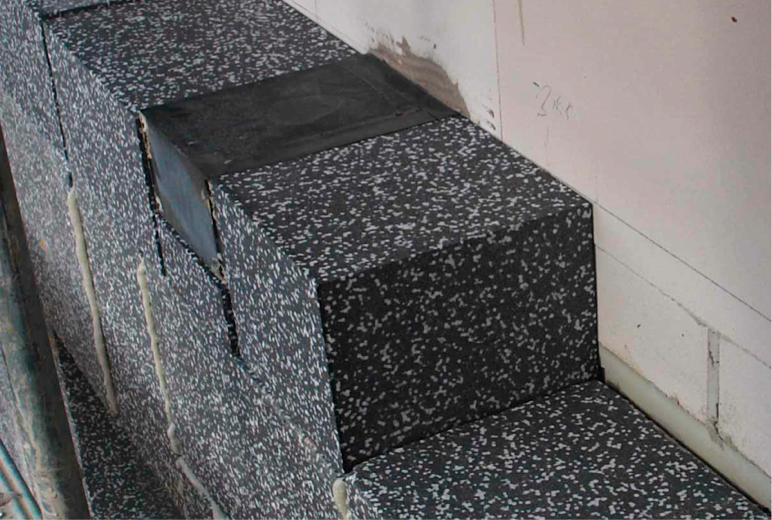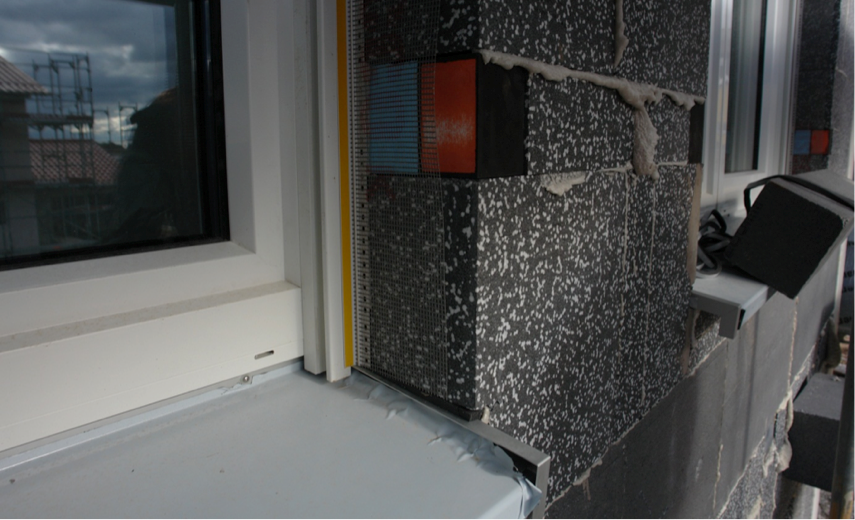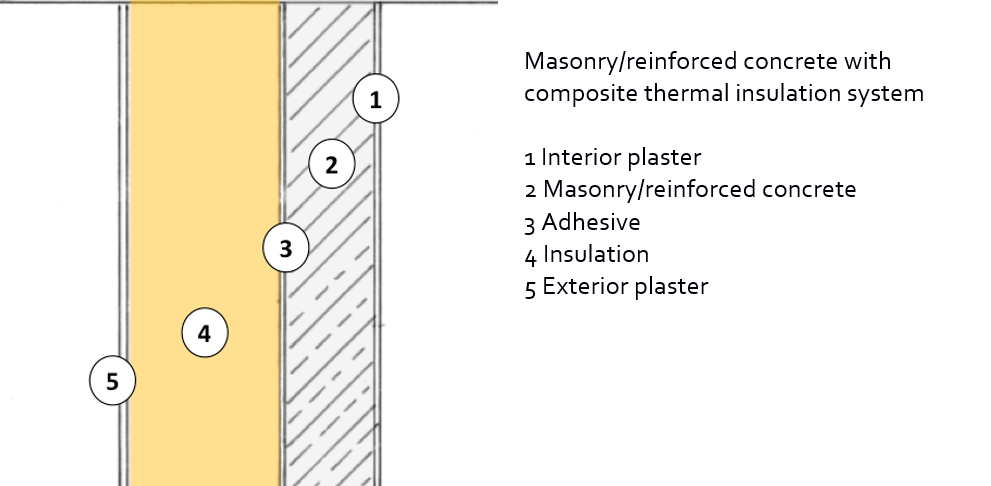01 02 03 04 05 06 07
Airtightness and services in the external wall
Airtightness and services in the external wall
In non-frame construction services such as electrical cables are traditionally slotted into the masonry. As an alternative, some system suppliers provide perforated bricks through which for instance electrical cables are laid or wall heating systems are integrated. The essential point is that the airtight layer is formed by the interior plaster, which means that all penetrations must be made airtight.
If a service line is installed on the inside of the external wall, e.g. the service wall of a sanitary cell, then the masonry must first be trowelled in order to make it airtight.

ETICS insulation with an anchoring point (implemented to minimize thermal bridging) for a light (source: Schulze Darup)

ETICS insulation with an anchoring point (implemented to minimize thermal bridging) for a baluster (source: Schulze Darup)

Diagram of a non-frame wall with a composite thermal insulation system (source: Schulze Darup, adapted)
Licensed under the Creative Commons Attribution Non-commercial No Derivatives License 4.0